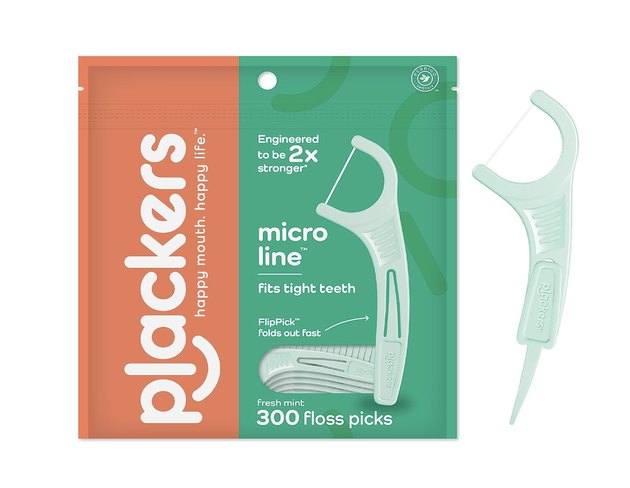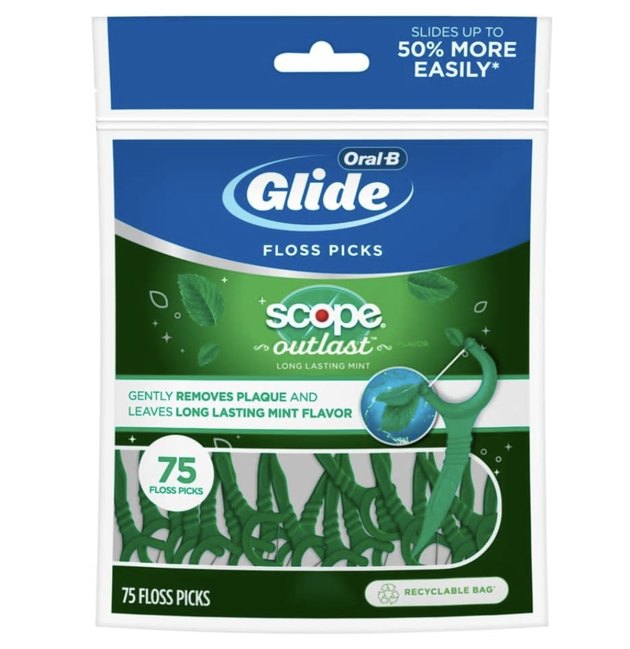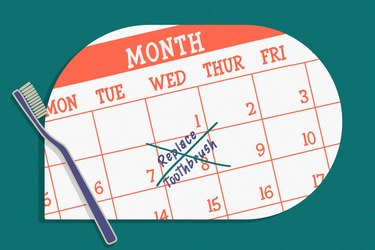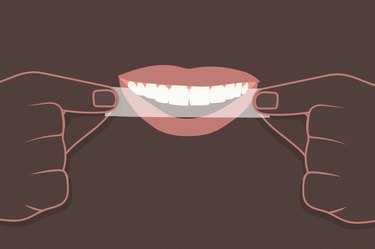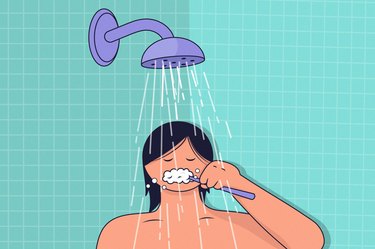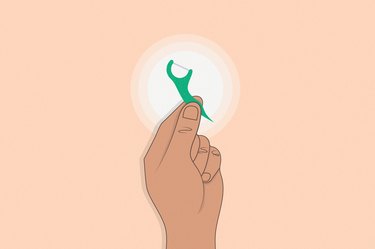
Floss picks (aka, those tiny plastic sticks with a piece of floss on them) can be a convenient alternative to traditional dental floss, especially if you have wrist mobility issues — like from arthritis.
But if you don't have a difficult time using regular floss, is it a better choice?
Video of the Day
Video of the Day
Any tool that makes it easier for you to floss regularly is a winner among most dentists. "I applaud anyone who takes the time and effort to clean between their teeth," says Derek Gatta, DMD, dentist and founder of the oral care line RiseWell.
That said, floss picks might have a few downsides that make plain old floss the best for most folks. Here's what you should know.
Risks of Using Floss Picks
The American Dental Association (ADA) recommends cleaning between your teeth with floss or another type of interdental cleaner at least once per day. A floss pick technically fits the bill, but they're not a favorite among all dentists.
Experts like Dr. Gatta say that floss picks might not do quite as good of a job at cleaning between your teeth as standard floss.
"When you floss, it's important to wrap the floss around each tooth in a "C" shape to really swipe away grimy organic matter," he says. "It's harder to do that with a pick."
There's also the possibility that a pick could end up redistributing plaque around your mouth rather than actually getting rid of it, because the amount of floss on the pick is so small.
"Each time you pass it between your teeth, you are picking up bacteria and depositing it to a new site," Dr. Gatta says. "Traditional floss is a longer strand so you can use a fresh section each time you pass between a new set of teeth," he adds.
Dental Picks vs. Floss: Which Is Better?
There aren't really any studies directly comparing dental picks versus floss, so it's hard to say for certain whether one has an "edge" over the other.
But Dr. Gatta is a fan of regular floss for most people. It's easier to wrap a simple piece of string around your tooth to really get those in-between spots clean.
Plus, you can use a new piece of floss for getting between different teeth, so you're not inadvertently sending gunk from one area of your mouth to another.
On the other hand? If a floss pick is easier for you to use, it's certainly preferable to not flossing at all. "Older patients with dexterity issues in their hands may opt to use picks," Dr. Gatta says. "It's easier for them and it is better than not doing anything to clean between the teeth," he adds.
How to Use Floss Picks
If you need to use floss picks (in a pinch or due to other health issues) there are a few steps to doing it effectively, including:
- Glide the floss in between two teeth.
- Holding both sides of the floss holder, try to curve the floss into a "C" shape around your tooth. "That can more predictably swipe away debris like traditional floss," Dr. Gatta says.
- Slide the floss up and down to remove buildup from around your gum line, then slide it from side to side to get any extra food bits and particles between your teeth. (If your gums are bleeding, though, you may be flossing too hard.)
- Repeat with the rest of your teeth, rinsing the floss halfway through to keep it clean.
Some floss picks to try include Plackers Micro Line Dental Floss Picks or Oral-B Complete Glide Floss Picks.
So, How Bad Is It Really to Use Floss Picks Instead of Regular Floss?
Sure, using a dental floss pick is better than skipping flossing altogether, but it's a good idea to stick with regular floss if you can. Picks can't wrap around your tooth the way floss does.
But "if you cannot use traditional floss due to wrist/hand issues, or you like the convenience of floss picks, then by all means, using them is better than not cleaning between your teeth at all," Dr. Gatta says.
"I still prefer traditional floss because it is more versatile and does not introduce bad bacteria to other parts of your mouth," he adds.
Is this an emergency? If you are experiencing serious medical symptoms, please see the National Library of Medicine’s list of signs you need emergency medical attention or call 911.

